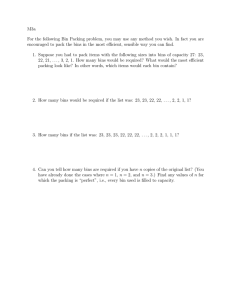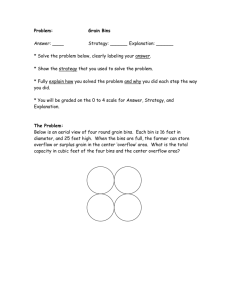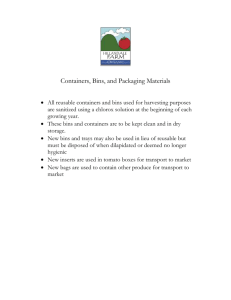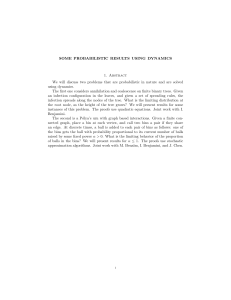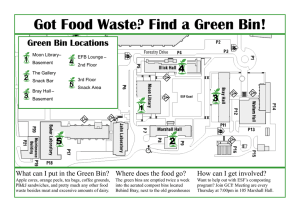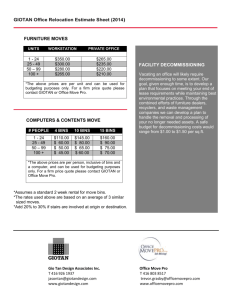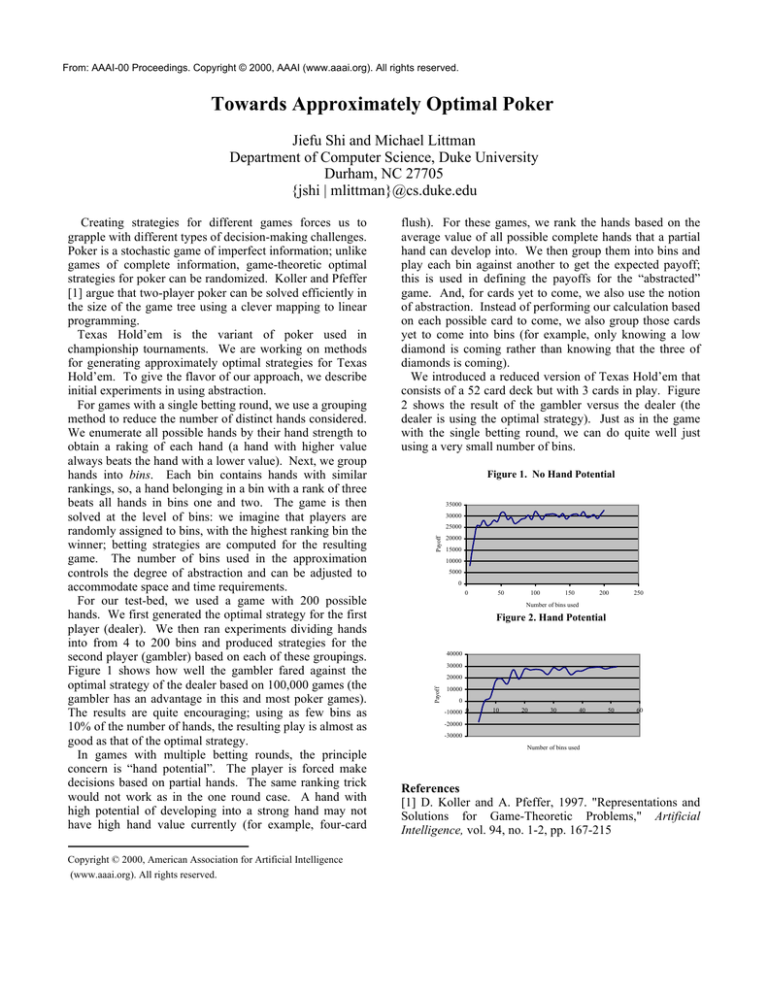
From: AAAI-00 Proceedings. Copyright © 2000, AAAI (www.aaai.org). All rights reserved.
Towards Approximately Optimal Poker
Jiefu Shi and Michael Littman
Department of Computer Science, Duke University
Durham, NC 27705
{jshi | mlittman}@cs.duke.edu
Copyright © 2000, American Association for Artificial Intelligence
(www.aaai.org). All rights reserved.
flush). For these games, we rank the hands based on the
average value of all possible complete hands that a partial
hand can develop into. We then group them into bins and
play each bin against another to get the expected payoff;
this is used in defining the payoffs for the “abstracted”
game. And, for cards yet to come, we also use the notion
of abstraction. Instead of performing our calculation based
on each possible card to come, we also group those cards
yet to come into bins (for example, only knowing a low
diamond is coming rather than knowing that the three of
diamonds is coming).
We introduced a reduced version of Texas Hold’em that
consists of a 52 card deck but with 3 cards in play. Figure
2 shows the result of the gambler versus the dealer (the
dealer is using the optimal strategy). Just as in the game
with the single betting round, we can do quite well just
using a very small number of bins.
Figure 1. No Hand Potential
35000
30000
Payoff
25000
20000
15000
10000
5000
0
0
50
100
150
200
250
Number of bins used
Figure 2. Hand Potential
40000
30000
20000
Payoff
Creating strategies for different games forces us to
grapple with different types of decision-making challenges.
Poker is a stochastic game of imperfect information; unlike
games of complete information, game-theoretic optimal
strategies for poker can be randomized. Koller and Pfeffer
[1] argue that two-player poker can be solved efficiently in
the size of the game tree using a clever mapping to linear
programming.
Texas Hold’em is the variant of poker used in
championship tournaments. We are working on methods
for generating approximately optimal strategies for Texas
Hold’em. To give the flavor of our approach, we describe
initial experiments in using abstraction.
For games with a single betting round, we use a grouping
method to reduce the number of distinct hands considered.
We enumerate all possible hands by their hand strength to
obtain a raking of each hand (a hand with higher value
always beats the hand with a lower value). Next, we group
hands into bins. Each bin contains hands with similar
rankings, so, a hand belonging in a bin with a rank of three
beats all hands in bins one and two. The game is then
solved at the level of bins: we imagine that players are
randomly assigned to bins, with the highest ranking bin the
winner; betting strategies are computed for the resulting
game. The number of bins used in the approximation
controls the degree of abstraction and can be adjusted to
accommodate space and time requirements.
For our test-bed, we used a game with 200 possible
hands. We first generated the optimal strategy for the first
player (dealer). We then ran experiments dividing hands
into from 4 to 200 bins and produced strategies for the
second player (gambler) based on each of these groupings.
Figure 1 shows how well the gambler fared against the
optimal strategy of the dealer based on 100,000 games (the
gambler has an advantage in this and most poker games).
The results are quite encouraging; using as few bins as
10% of the number of hands, the resulting play is almost as
good as that of the optimal strategy.
In games with multiple betting rounds, the principle
concern is “hand potential”. The player is forced make
decisions based on partial hands. The same ranking trick
would not work as in the one round case. A hand with
high potential of developing into a strong hand may not
have high hand value currently (for example, four-card
10000
0
-10000 0
10
20
30
40
50
60
-20000
-30000
Number of bins used
References
[1] D. Koller and A. Pfeffer, 1997. "Representations and
Solutions for Game-Theoretic Problems," Artificial
Intelligence, vol. 94, no. 1-2, pp. 167-215

